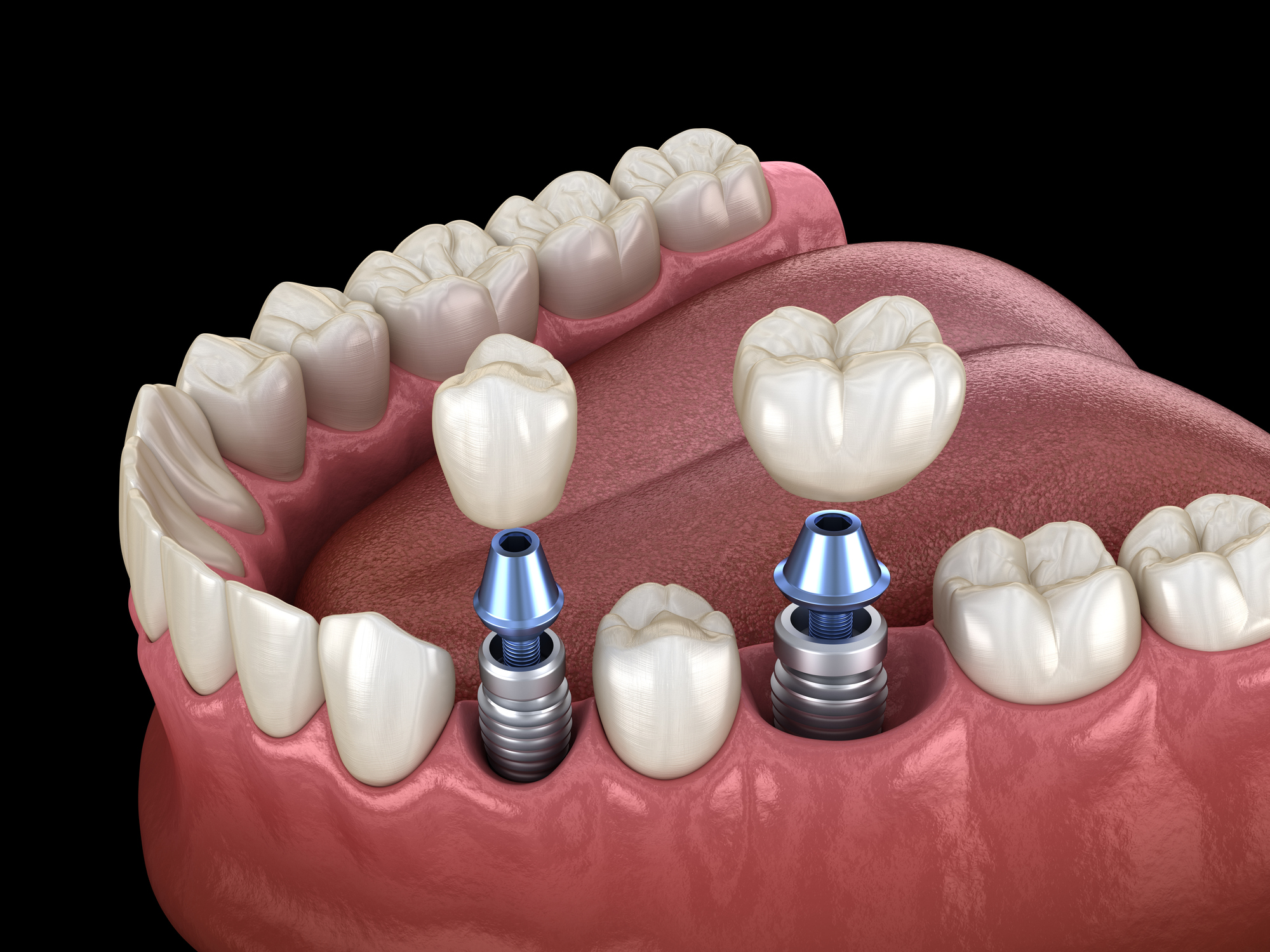The Basic Principles Of Dental Sense
The Basic Principles Of Dental Sense
Blog Article
The 9-Minute Rule for Dental Sense
Table of ContentsThe Single Strategy To Use For Dental Sense4 Easy Facts About Dental Sense DescribedThe Ultimate Guide To Dental SenseNot known Factual Statements About Dental Sense
are clinical tools operatively implanted right into the jaw to bring back an individual's capacity to chew or their appearance. They supply assistance for fabricated (phony) teeth, such as crowns, bridges, or dentures. When a tooth is lost because of injury or condition, an individual can experience difficulties such as fast bone loss, malfunctioning speech, or modifications to eating patterns that lead to pain.Oral dental implant systems are composed of an oral implant body and dental implant joint and might also include an abutment addiction screw. Root canal procedure. The dental implant body is surgically put in the jawbone in location of the tooth's origin. The dental implant joint is typically affixed to the implant body by the joint addiction screw and expands via gum tissues into the mouth to support the affixed fabricated teeth
(https://www.openlearning.com/u/matthewmusic-spvoez/about/)Structure of The Dental Implant System selecting oral implants, speak with your dental company regarding the possible advantages and risks, and whether you are a prospect for the treatment. Things to consider: Your general wellness is an essential factor in identifying whether you are a good candidate for oral implants, just how long it will take to recover, and for how long the implant may remain in area.
Smoking might influence the recovery procedure and decrease the long-lasting success of the dental implant. The recovery procedure for the dental implant body may take numerous months or longer, throughout which time you normally have a temporary joint in place of the tooth. the oral implant procedure: Very carefully follow the dental hygiene instructions offered to you by your dental provider.
Dental Sense for Beginners
Implant failure can result in the need for one more surgery to repair or replace the dental implant system. Restores the capability to chew Recovers aesthetic appearance Assists keep the jawbone from reducing as a result of bone loss Maintains the wellness of the surrounding bone and gum tissues Aids maintain surrounding (neighboring) teeth secure Enhances lifestyle Damages to bordering all-natural teeth during implant positioning Injury to the surrounding cells throughout surgical treatment, such as sinus opening Injury throughout surgical procedure (for example, crack of bordering jawbone) Poor feature, such as really feeling like the teeth do not attack together usually A feeling that the tooth is loosened or turning in location arising from a joint screw loosening Implant body failing (looseness of the dental implant body) due to systemic infection, which might be more probable in clients with uncontrolled diabetes as a result of local infection in bone and periodontals supporting the dental implant body due to delayed healing, which might be more probable in clients that smoke Trouble cleaning the gums around the dental implant, resulting in bad oral health Without treatment gum condition Post-surgical tingling as a result of nerve impingement or damage Always notify health treatment service providers and imaging professionals that you have dental implants prior to any type of magnetic vibration imaging (MRI) or x-ray procedures.
FDA is not aware of any type of negative events reported for MRI or x-ray procedures with dental implants. Oral implants systems are usually constructed from materials that adhere to international consensus requirements of the International Company for Standardization (ISO) or ASTM International. These standards have information of what makes a secure material.

A dental implant is a framework that changes a missing tooth. With screw-like gadgets, the surgeon inserts an implant right into the jawbone, and it acts as a support for a fabricated tooth, called a crown.
The Best Strategy To Use For Dental Sense
Some individuals are not qualified for oral implant surgical treatment. It is for oral surgeons to operate individuals with: intense illnessuncontrollable metabolic diseasebone or soft tissue illness or infectionIf these issues are dealt with, a person can have the surgery. In, oral surgeons avoid running on people with: If people with any one of the above undergo dental implant surgical treatment, there is a higher risk of the dental implant stopping working.

Dental implant surgery is a tailored process. It's not the very same for everyone. But the complying with offers a basic review of what you can expect your dentist, dental doctor, periodontist or prosthodontist to do: Position the dental implant operatively. Offer you time to heal. Affix the message and last crown, bridge or denture.
Next off, your cosmetic surgeon will meticulously position the oral implant right into your jaw. If your implant is near the front of your mouth, your dental practitioner will certainly make a momentary tooth for you to wear till you heal.
The Main Principles Of Dental Sense
Your supplier can tell you what to expect in your situation. During the healing phase, your jawbone should fuse to the dental implant. This procedure, called osseointegration, is essential for stability and long-lasting success. This process can take anywhere from 3 to nine months. In many cases, it might take much longer.
As soon as your implant heals, your dentist can attach the abutment (tiny adapter blog post) and your final remediation (crown, bridge or denture). This typically takes concerning one hour to finish and might call for a 2nd small surgical treatment. You should not feel any kind of pain during your oral implant procedure because your copyright will make use of medicine to numb your gums.
Report this page